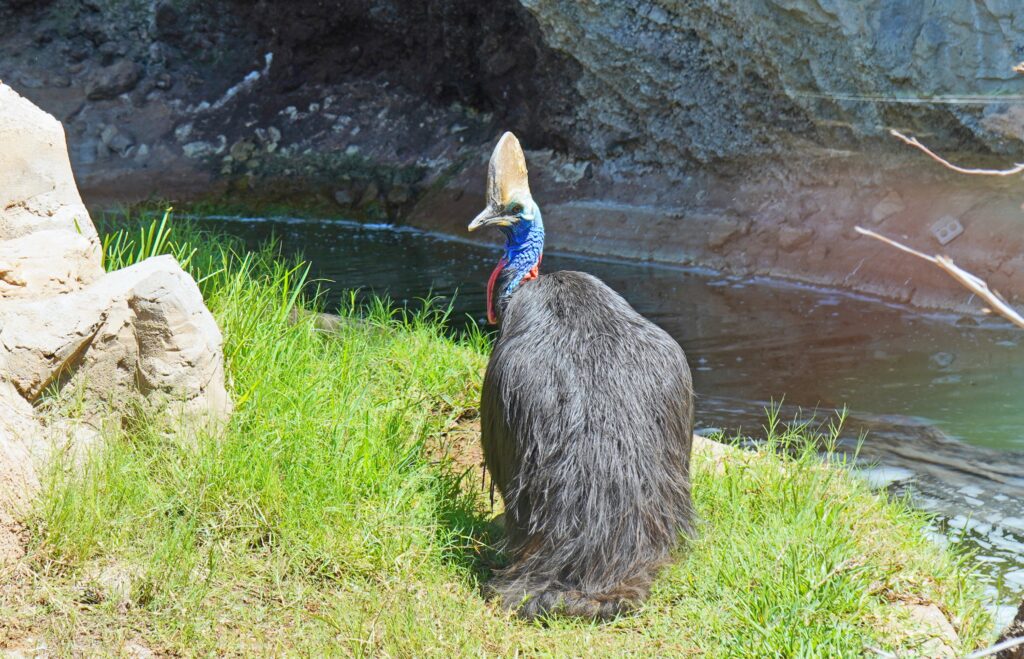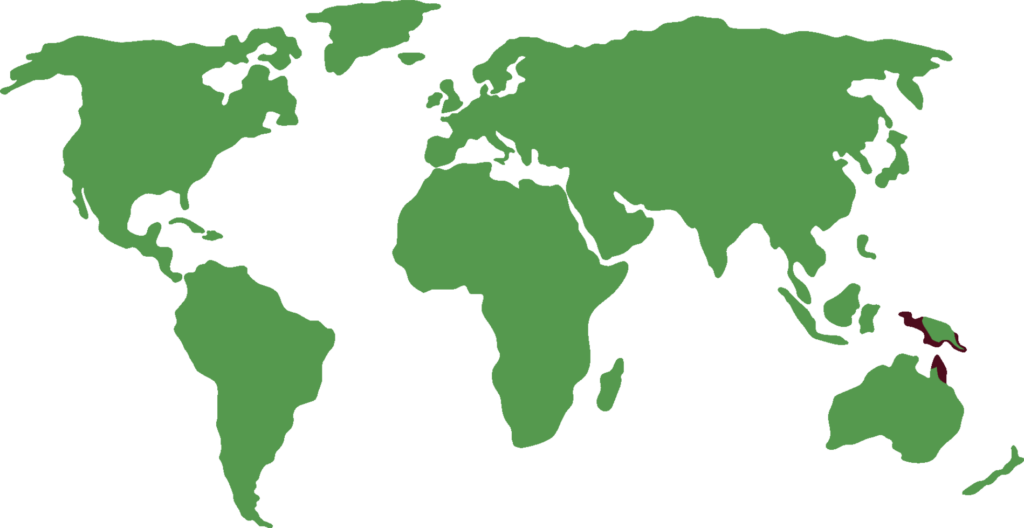SOUTHERN CASSOWARY
Casuarius casuarius

LENGTH

1,5 m
WEIGHT

80 kg
LIFESPAN

50 years
The southern cassowary is a species of strutting bird of the family Casuaridae, composed of three species belonging to the genus Casuarius. It is the second largest bird in the world, after the ostrich. They are ratites, they cannot fly.
General characteristics
The cassowary has a stiff, scuffed black plumage. The neck and face are mostly blue with two small reddish areas: the nape of the neck and the two dewlaps, which measure about 18 cm and hang from the neck contour.
It has a characteristic triangular cap on the head that measures about 15cm in length. It is used to avoid skull injuries to the cassowary during fights.
The three-toed feet are thick and powerful, equipped with a lethal dagger-like claw up to 12 cm. These claws can cause serious damage to any animal or person facing attack.
The female is usually larger than the male, reaching 1.5m in height and weighing 80kg.
Feeding
It feeds on a wide variety of forest fruits that it collects from the ground. Occasionally, it eats small animals, snakes, fungi, insects or even carrion.
Behaviour
It is a solitary and territorial animal that generally lives and feeds alone or in monogamous pairs.
It has a reputation for being dangerous to humans and animals, and is often considered aggressive. If it feels threatened, it can jump quite high and kick powerfully with its razor-like claws.
Although solitary, cassowaries can sometimes form temporary groups when in areas with an abundance of food. They may also have social encounters during the mating season, where they engage in complex and elaborate courtship displays.
Reproduction
The cassowary is oviparous. The male builds a nest on the ground and covers it with plant material. Females lay the eggs in the nest and males are the one who are in charge of the incubation. Each clutch may contain 3 to 5 eggs and incubation time lasts between 40 and 50 days.
The male also takes care of the chicks that hatch and after a year, leaves them free to return to their solitary life.
Threats
Some of the most notable threats to this species are habitat loss, predators, hunting and roadkill.
Distribution
The common cassowary is distributed in Indonesia, Papua New Guinea and northeastern Australia. They mainly inhabit tropical rainforests, but can also be found in savannah forests or mangrove swamps.

Did you know?
They may ingest some fruits that are toxic to other animals.
They help disperse the seeds of the trees and fruits they eat, as they do not digest them and come out intact when they defecate.
Its small wings serve to balance its body when it runs.
Conservation status
